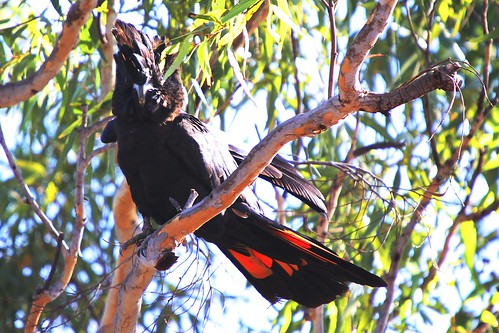 Image by Marj KibbyJust last week, the forest red-tailed cockatoo were added to the Commonwealth Threatened Species List. Today, seven of those majestic birds were released into the wild after spending time at the Black Cockatoo Rehabilitation Centre in Martin.
Image by Marj KibbyJust last week, the forest red-tailed cockatoo were added to the Commonwealth Threatened Species List. Today, seven of those majestic birds were released into the wild after spending time at the Black Cockatoo Rehabilitation Centre in Martin.
The release of the cockatoos was carried out by volunteers and wildlife officers at the Department of Environment and Conservation in what has been described as the State's largest release of the species.
The bird, also known as Calyptorhynchus banksii naso, was added to the Commonwealth Threatened Species List by Federal Environment Minister Peter Garrett last week.
DEC wildlife officer Rick Dawson said the cockatoos all originated from the same area and had been at the rehabilitation centre for up to a year.
"Six of the cockatoos were brought in after being hit by cars, and two had been disentangled from barbed wire fences and brought to the centre," Mr Dawson said.
"These birds have now recovered to the extent that they can be returned to the wild, and we are confident that they will make this transition smoothly. This species is declining in abundance, and to be able to give these birds a second chance at life and hopefully boost the local breeding population is a really positive thing," he said.
Prior to release the birds were micro chipped and DNA samples were taken.
"This will ensure we can identify the birds if we encounter them again, as well as providing us with genetic information about this species of cockatoo so we can learn how to better protect them in the future," Mr Dawson said.
The forest red-tailed black cockatoo is known only to exist in Western Australia, with populations distributed through the Perth Hills, north to Gingin, south-east to Mt Saddleback and south to Rocky Gully.
Once common throughout the Jarrah forest areas of the State, just 10,000 to 15,000 birds are now estimated to exist in the wild.